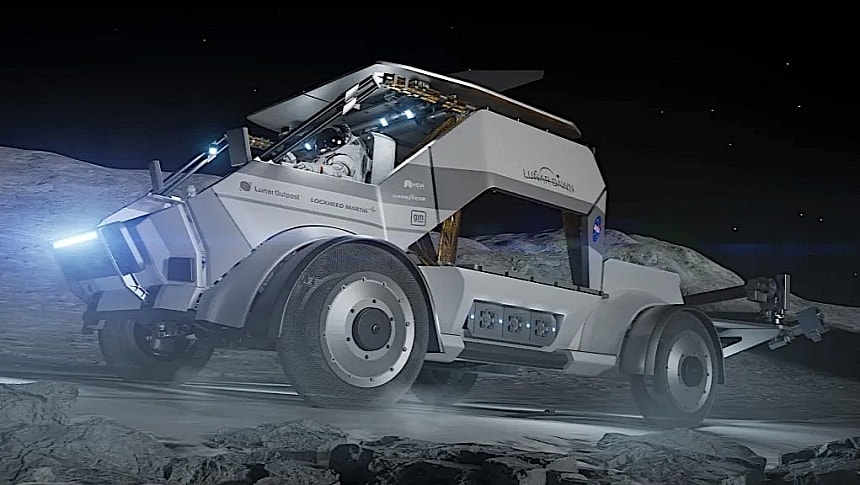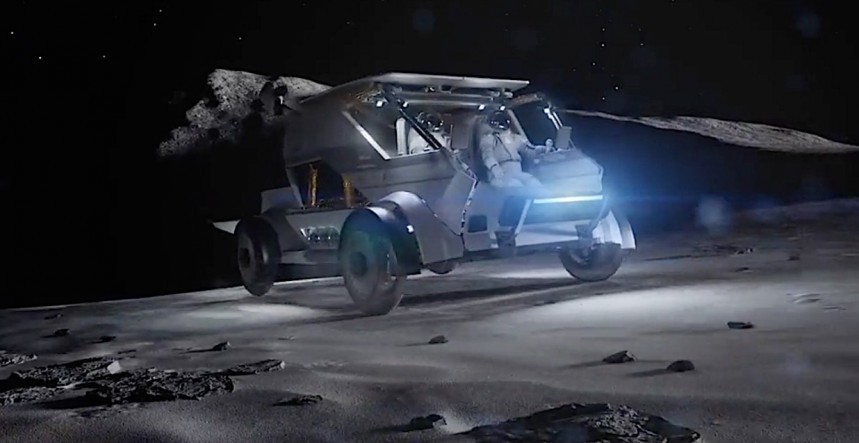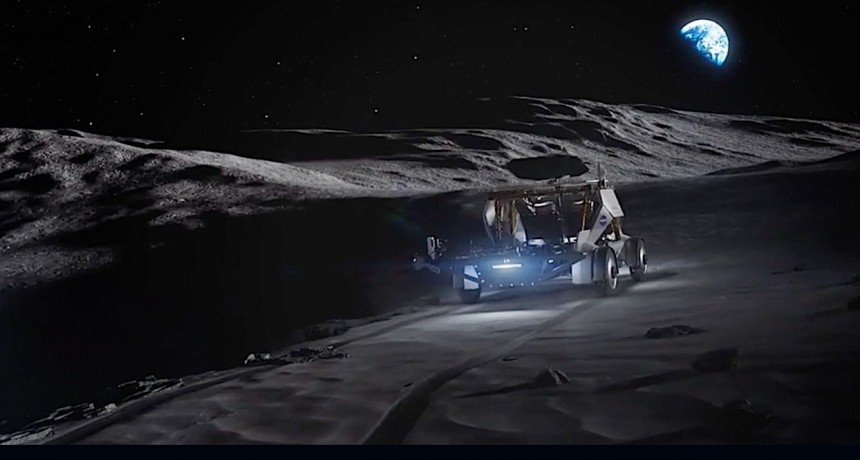This week marked the moment when NASA finally made up its mind who to trust with the assembly of the rover the astronauts of the Artemis program will use on the Moon later this decade. The competition is fierce, and the machines chosen for the task look simply extraordinary.
The American space agency has a huge budget for the vehicle it generically calls the Lunar Terrain Vehicle (LTV). A total of $4.6 billion is set aside for the development of the machine, more or less evenly split between the three selected companies.
The three are Lunar Outpost, Intuitive Machines, and Venturi Astrolab, and they have all been gifted money and a push to develop a system that meets NASA's requirements for the rover over the next year. Each of them has a number of high-profile partners for their respective projects, an approach that's hoped it will ensure their success.
We discussed generically what each of the three groups is bringing to the table in an earlier story and, as promised, we'll now start looking into each of the three vehicles and see what they have to offer. And we'll start with the Moon SUV Lunar Outpost is working on, the Lunar Dawn LTV.
Lunar Outpost is a space startup established in 2017. It presently is in the business of making rovers and robotic systems for space exploration, but it also has a hand in space infrastructure and resources.
The company partnered with a number of big names from both the aerospace and carmaking industries for the LTV project. On board for the project are Lockheed Martin, General Motors, The Goodyear Tire and Rubber Company, and MDA Space.
The general specifications for the rover apply to the Lunar Dawn as well. The unpressurized vehicle will have to be able to withstand and properly operate in the harsh environment on the surface of Earth's satellite, where temperatures vary greatly between 280 to minus 280 degrees Fahrenheit (138 to minus 173 degrees Celsius).
The Dawn will have to be able to carry up to 500 kg (1,100 pounds) of cargo, two fully suited astronauts included, and will have to be powered by some kind of electric powertrain. Equipment-wise, NASA is asking for two storage racks, headlights, a navigation console, and a series of cameras and sensors.
The rover will generally be human-controlled, but it will have to have autonomous capabilities as well, because NASA plans to use the rover to do science even when humans are not there. Separately, because the space agency will kind of rent the hardware, Lunar Outpost and its partners will have the opportunity to operate the rover remotely for their own goals.
The Lunar Dawn is described as a flight deck-forward vehicle that should allow expansive views, something that is desirable in the unknown terrain where it will operate. Because its makers will have the ability to use it for their own goals, the rover will be equipped with a reconfigurable cargo bed, which kind of makes this design more of a truck than an SUV. A robotic arm will also be on deck to help loading and unload.
Each of the partners involved in this project brings something unique to the table. Lockheed Martin is, of course, the space veteran in this project, and although it doesn't specifically say what it contributes, its expertise would probably prove invaluable.
MDA Space is tasked with providing the robotic arm and interfaces for the rover, while Goodyear will supply the tires that will support the rover on the surface of the Moon.
Perhaps the most exciting contribution is that of General Motors, the carmaking veteran that will be responsible for the rover's ability to move on the rugged surface of the satellite. Enter the Ultium EV battery technology and its first use on another world.
GM detailed the tech for the first time in 2020, when it introduced Ultium as the battery that should drive all competition into the ground. Since that time Ultium has evolved and presently powers or is on track to power a number of GM, Acura, and Honda vehicles. And it will also be used on future tactical military vehicles the company's Defense offshoot will soon be making.
It's unclear at this point what the exact capabilities of the space-going Ultium batteries will be, but given the relatively short time this crew has at its disposal to come up with something useful, we'll probably learn more about that pretty soon.
If Lunar Outpost and its partners are eventually selected, the team will have to demonstrate the rover up there on the Moon before it is cleared to be used by humans. The first astronauts to travel around in the Lunar Dawn LTV will be the ones flying on the Artemis V mission, presently scheduled for 2029.
If it doesn't make into the Artemis program, we're pretty certain this rover will easily find its purpose, perhaps in private missions to the Moon or, who knows, maybe even Mars.
The three are Lunar Outpost, Intuitive Machines, and Venturi Astrolab, and they have all been gifted money and a push to develop a system that meets NASA's requirements for the rover over the next year. Each of them has a number of high-profile partners for their respective projects, an approach that's hoped it will ensure their success.
We discussed generically what each of the three groups is bringing to the table in an earlier story and, as promised, we'll now start looking into each of the three vehicles and see what they have to offer. And we'll start with the Moon SUV Lunar Outpost is working on, the Lunar Dawn LTV.
Lunar Outpost is a space startup established in 2017. It presently is in the business of making rovers and robotic systems for space exploration, but it also has a hand in space infrastructure and resources.
The company partnered with a number of big names from both the aerospace and carmaking industries for the LTV project. On board for the project are Lockheed Martin, General Motors, The Goodyear Tire and Rubber Company, and MDA Space.
The general specifications for the rover apply to the Lunar Dawn as well. The unpressurized vehicle will have to be able to withstand and properly operate in the harsh environment on the surface of Earth's satellite, where temperatures vary greatly between 280 to minus 280 degrees Fahrenheit (138 to minus 173 degrees Celsius).
The rover will generally be human-controlled, but it will have to have autonomous capabilities as well, because NASA plans to use the rover to do science even when humans are not there. Separately, because the space agency will kind of rent the hardware, Lunar Outpost and its partners will have the opportunity to operate the rover remotely for their own goals.
The Lunar Dawn is described as a flight deck-forward vehicle that should allow expansive views, something that is desirable in the unknown terrain where it will operate. Because its makers will have the ability to use it for their own goals, the rover will be equipped with a reconfigurable cargo bed, which kind of makes this design more of a truck than an SUV. A robotic arm will also be on deck to help loading and unload.
Each of the partners involved in this project brings something unique to the table. Lockheed Martin is, of course, the space veteran in this project, and although it doesn't specifically say what it contributes, its expertise would probably prove invaluable.
MDA Space is tasked with providing the robotic arm and interfaces for the rover, while Goodyear will supply the tires that will support the rover on the surface of the Moon.
GM detailed the tech for the first time in 2020, when it introduced Ultium as the battery that should drive all competition into the ground. Since that time Ultium has evolved and presently powers or is on track to power a number of GM, Acura, and Honda vehicles. And it will also be used on future tactical military vehicles the company's Defense offshoot will soon be making.
It's unclear at this point what the exact capabilities of the space-going Ultium batteries will be, but given the relatively short time this crew has at its disposal to come up with something useful, we'll probably learn more about that pretty soon.
If Lunar Outpost and its partners are eventually selected, the team will have to demonstrate the rover up there on the Moon before it is cleared to be used by humans. The first astronauts to travel around in the Lunar Dawn LTV will be the ones flying on the Artemis V mission, presently scheduled for 2029.
If it doesn't make into the Artemis program, we're pretty certain this rover will easily find its purpose, perhaps in private missions to the Moon or, who knows, maybe even Mars.








